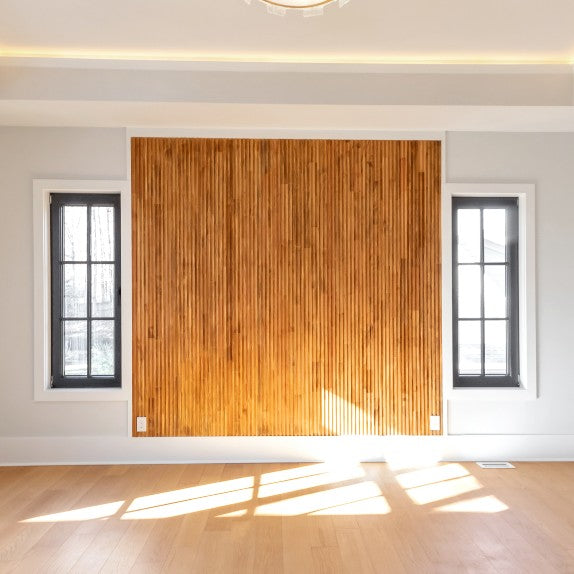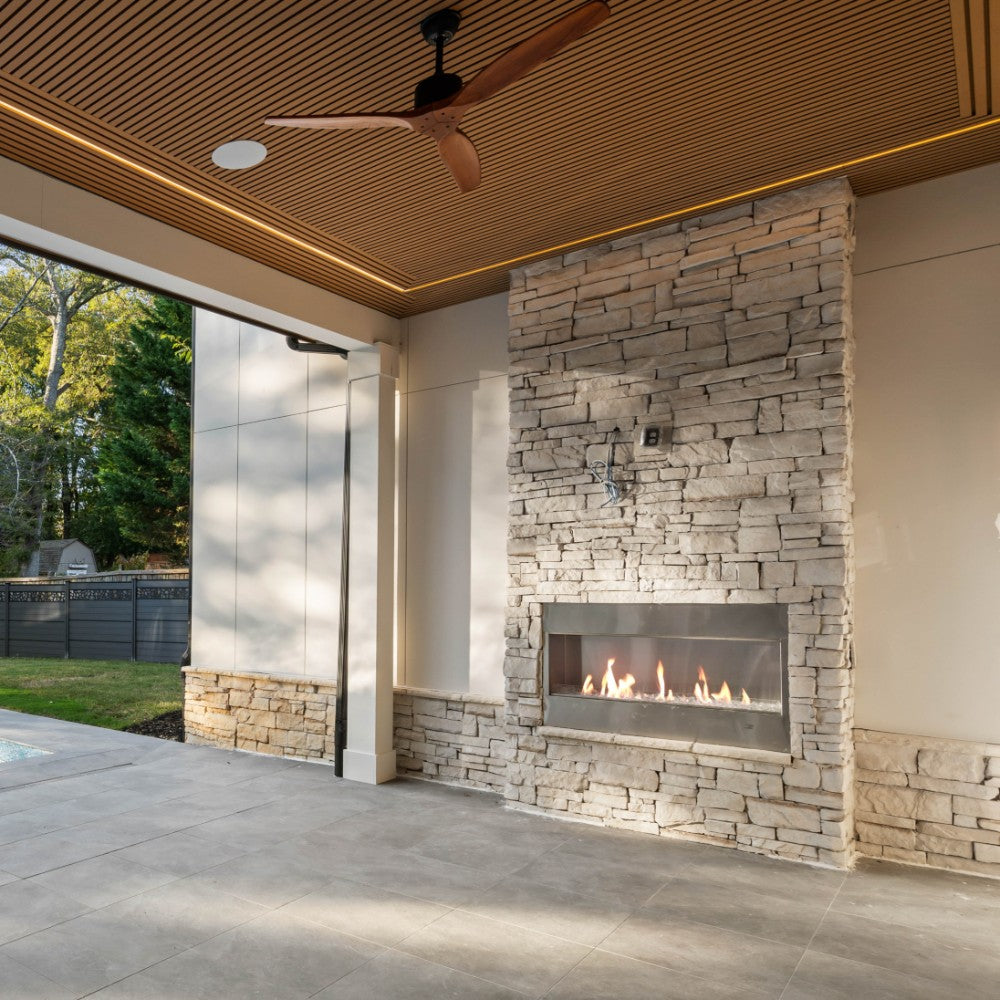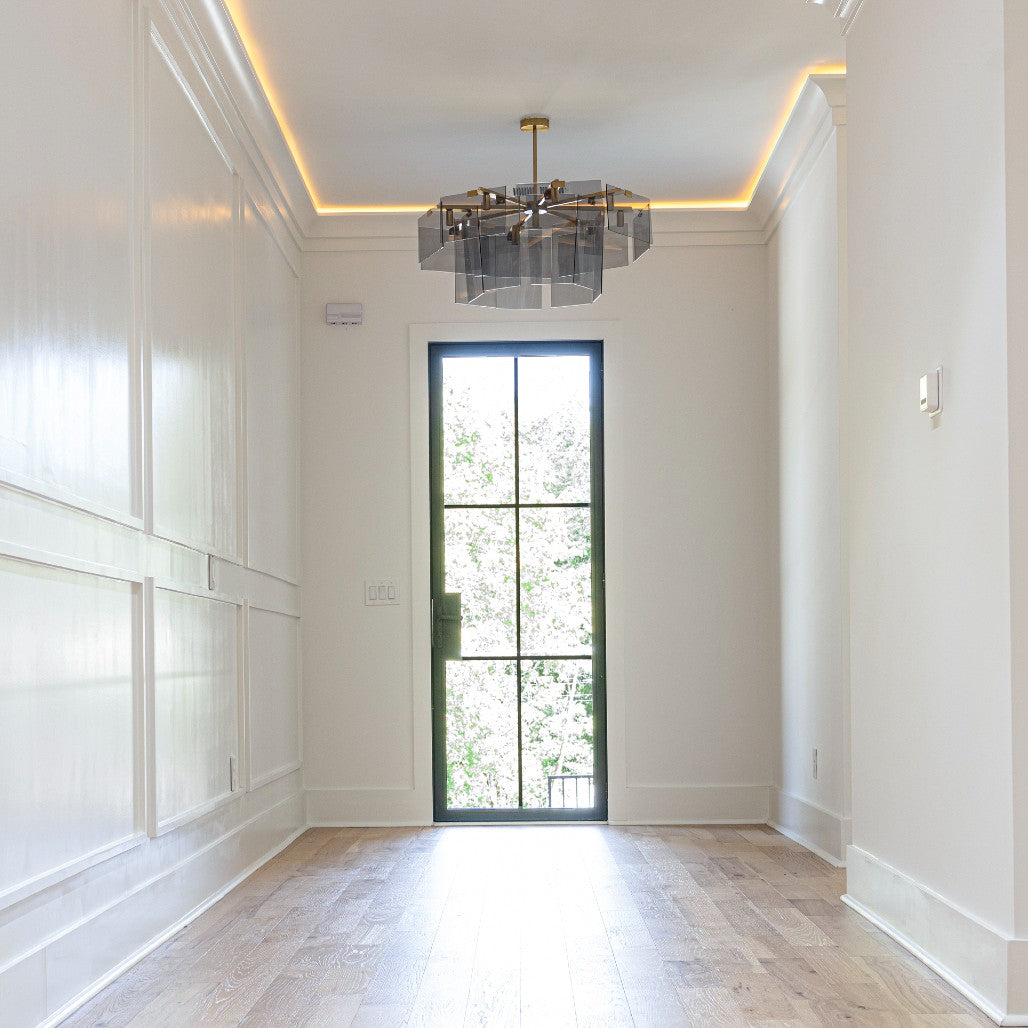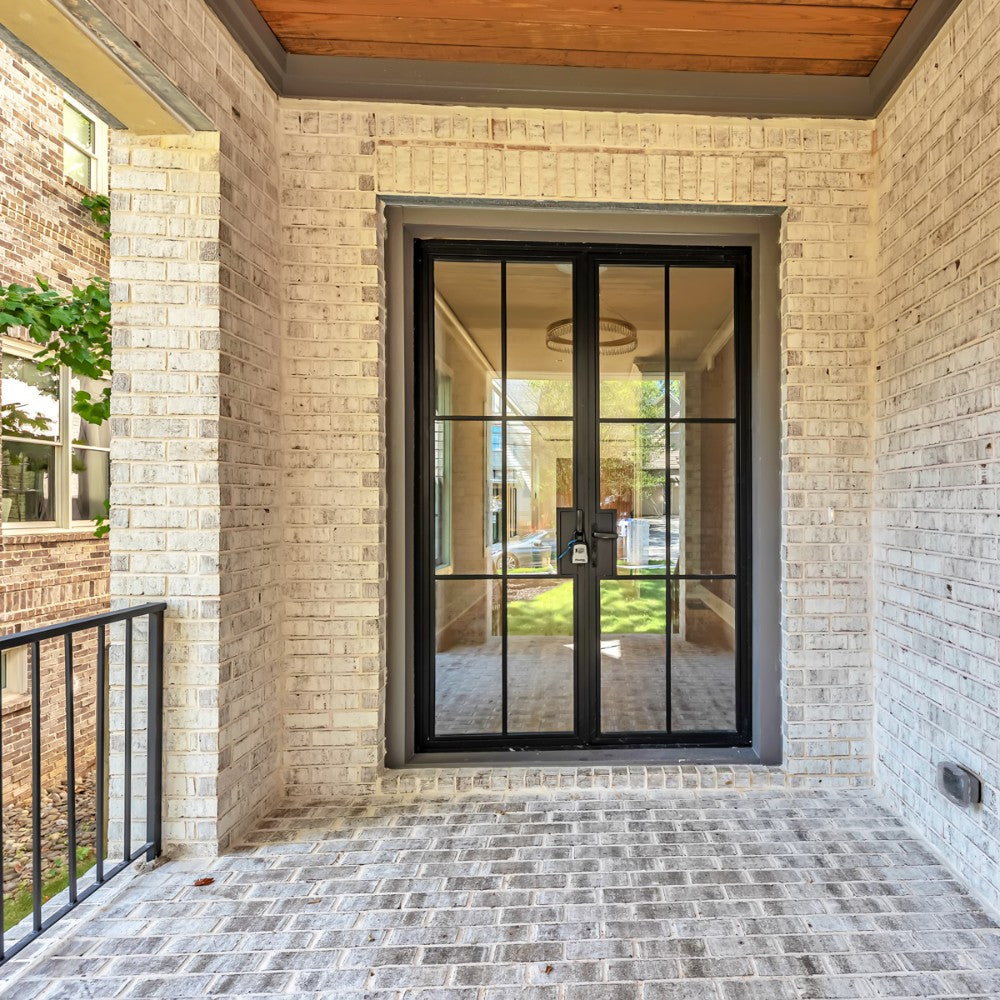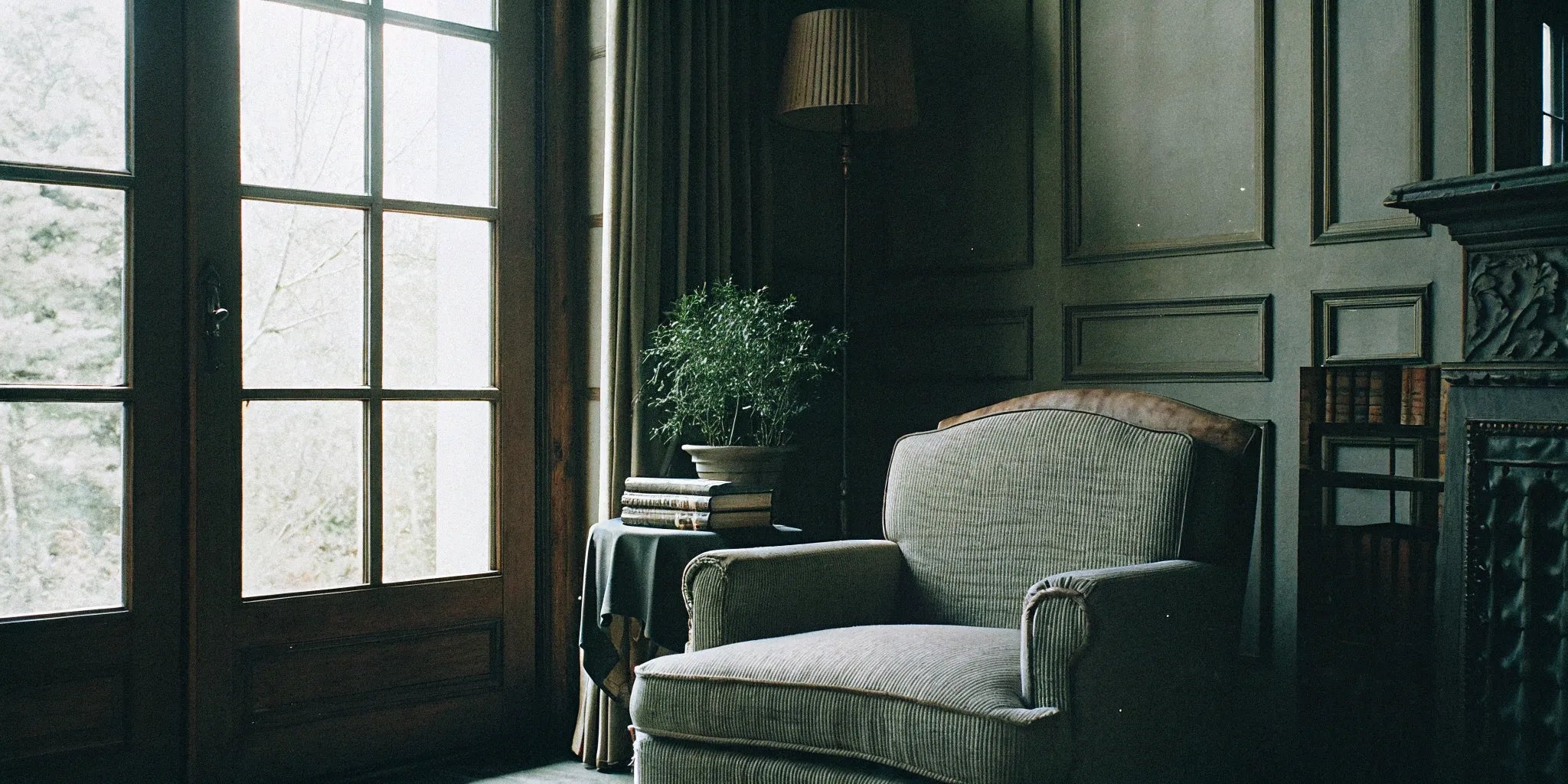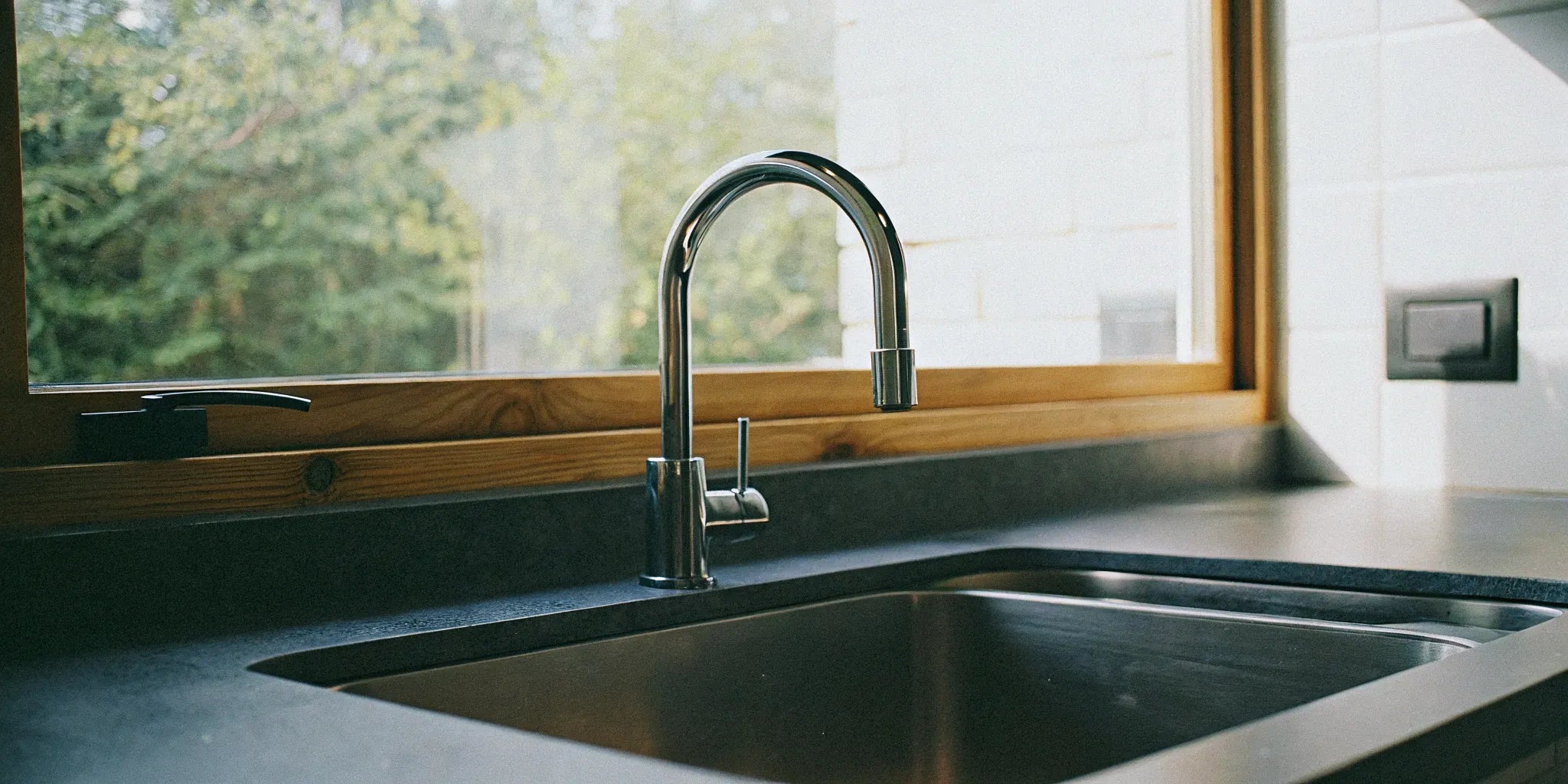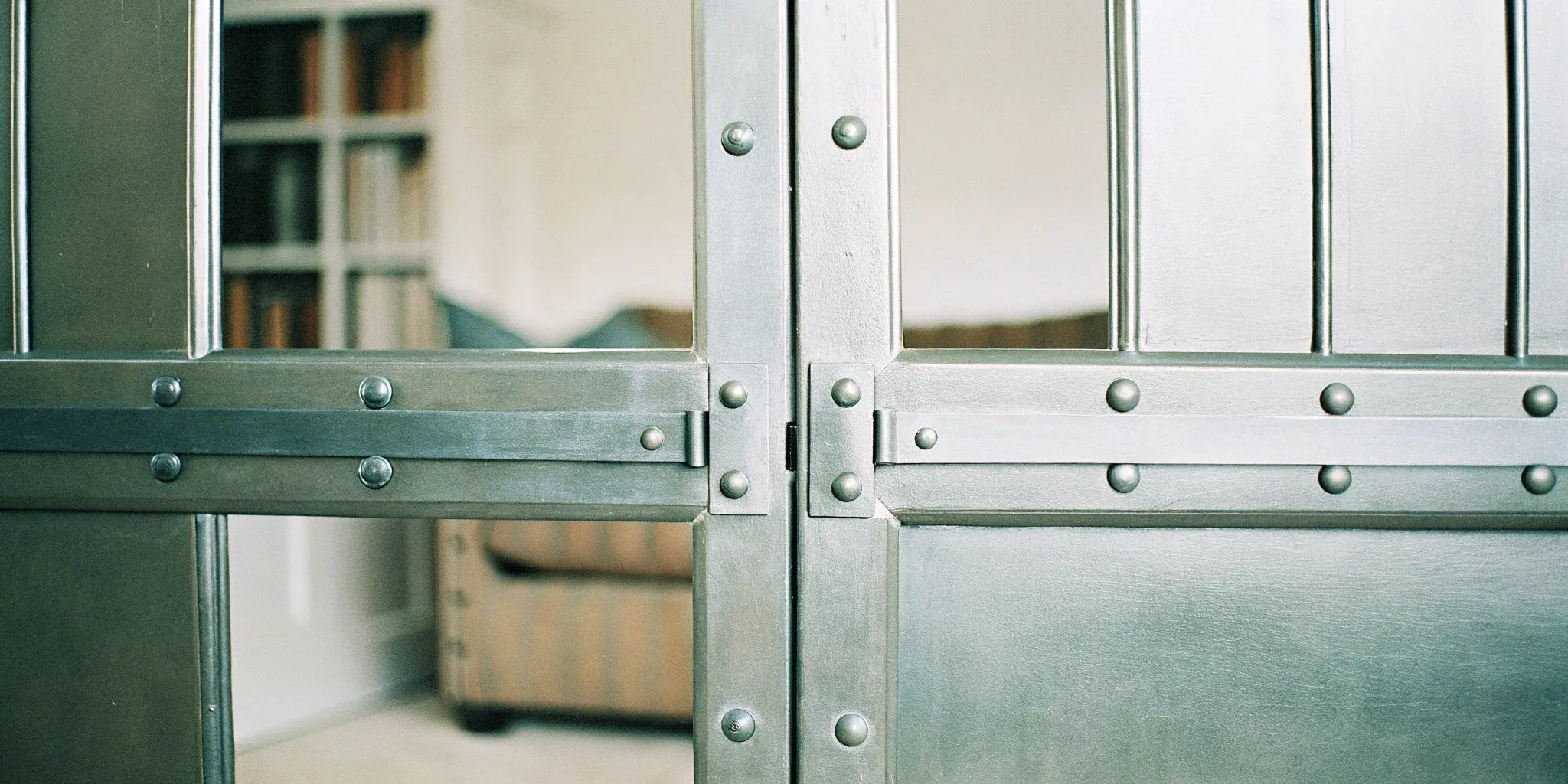
Steel Door Price: How Much Should You Really Pay?
It’s easy to focus on the cost of a new door and see it as just another expense. But a quality steel door is one of the smartest investments you can make for your home. It delivers powerful security, instantly improves your curb appeal, and can even help lower your energy bills. Understanding this long-term value is the key to putting the initial steel door price into perspective. We’ll show you how durability, low maintenance, and better efficiency make a steel door an upgrade that pays for itself over time, so you can choose a product that delivers value for decades.
Key Takeaways
- Budget for the Complete Project: Remember that the final price of your steel door includes the door's quality and design, plus essential extras like security hardware and professional installation.
- Invest in Long-Term Value: A steel door pays for itself over time with its exceptional durability, minimal maintenance requirements, added security, and energy-saving insulation.
- Get the Details Right for a Perfect Fit: Ensure a smooth project by comparing door specifications, requesting itemized quotes, and meticulously measuring your entryway and confirming the door swing.
What Really Goes Into a Steel Door's Price?
When you start shopping for a new steel door, you’ll quickly see that prices can vary quite a bit. It’s not just about picking a style you like; several key factors come together to determine the final cost. Think of it like building a custom car—the base model is one price, but every upgrade, from the engine to the paint job, adds to the total. A
Understanding these elements helps you set a realistic budget and ensures you’re paying for the features that matter most to you. Whether your top priority is maximum security, energy efficiency, or a specific aesthetic, knowing what drives the cost allows you to make an informed decision. We’ll break down the six main components that influence the price tag, so you can find the perfect steel door that fits both your home and your budget without any surprises.
Understanding Steel Door Construction
Before we get into specific features, it helps to understand how a steel door is actually made. The materials and engineering behind its design are major drivers of its final cost. Unlike a solid wood door, a steel door is a sophisticated composite structure designed for strength, security, and insulation. This construction method allows for a high level of performance without the extreme weight and cost of a solid steel slab. Knowing what’s inside gives you a better appreciation for its value and helps you see why one door might be priced differently from another, even if they look similar on the surface.
The Core and Skin of a Steel Door
A modern steel door isn’t a solid piece of metal. Instead, it’s constructed with two sheets of heavy-gauge steel, which form the outer "skin." This skin provides the door's signature strength and resistance to dents, warping, and cracking. Sandwiched between these steel layers is a high-density foam core. According to home improvement experts at Angi, this insulating foam is the secret to the door's energy efficiency, helping to keep your home comfortable in any season and potentially lowering your energy bills. This combination of a tough exterior and an insulated interior is what makes steel doors such a practical and high-performing choice for any entryway.
Common Styles and Finishes
The style and finish you choose will also significantly influence the price. A standard 36x80 Single Steel Door will naturally have a different price point than a more expansive 60x96 Double Steel Door designed to create a grand entrance. You can also add sidelites—windows on one or both sides of the door—to bring more natural light into your foyer. Finishes also play a key role. Most doors come primed and ready for you to paint, but you can also find options with durable factory-applied paint or powder-coated finishes in colors like black, white, or gray. These pre-finished options add to the cost but provide a long-lasting, professional look right out of the box.
Does Steel Quality and Gauge Matter?
Not all steel is created equal, and this is the foundation of your door's cost. The price often reflects the gauge, or thickness, of the steel used. It’s a little counterintuitive, but a lower gauge number means thicker, more durable steel. For example, a 20-gauge steel door is thicker and more resistant to dents and damage than a 24-gauge door. This added strength and security comes with a higher price. The quality of the steel itself, which is a mix of iron and carbon, also contributes to its longevity and ability to stand up to the elements, making it a crucial factor in the overall investment.
How Steel Gauge Affects Price
When you're comparing steel doors, one of the most significant factors influencing the price is the gauge—a measure of the steel's thickness. It might seem a bit backward, but a lower gauge number means you're getting thicker, more robust steel. For example, a 20-gauge door is considerably stronger and more resistant to dents than a 24-gauge door. This added material provides superior security and durability, which is why thicker steel naturally comes with a higher price tag. It’s a crucial detail to check when you're setting your budget and deciding what level of performance you need.
Beyond the initial cost, investing in a lower-gauge door is really about long-term value. The quality of the steel doesn't just affect its ability to withstand a potential break-in; it also determines how well it holds up to daily life and weather. A thicker, higher-quality steel door is less likely to warp or dent, saving you from future repair costs and maintenance headaches. While the upfront investment might be more, the long-term benefits—like enhanced security and lasting durability—make it a smart choice that pays off for years to come.
How Size and Style Change the Price Tag
Like most building materials, standard sizes are more budget-friendly than custom dimensions. Common door sizes, such as 36x80 inches, are produced in large quantities, which keeps their costs down. If your entryway is an unusual size, you’ll need a custom door, which will increase the price. Beyond size, the design itself is a major cost driver. A simple, flat-paneled door will be the most affordable option. As you add more intricate designs, like embossed panels or decorative glass inserts (known as lites), the price will climb. The more complex the design, the more you can expect to invest.
Cost Differences by Door Type
The type of steel door you choose has one of the biggest impacts on its price. The market offers a huge spectrum, with prices for steel doors ranging from about $150 to over $5,000. A basic, functional single steel door without any glass or fancy paneling will land on the lower end of that scale, typically between $150 and $400. These are perfect for side or back entrances where utility is key. However, if you’re looking for a front door that makes a statement, options with decorative glass panels can easily range from $500 to $1,000. For a grander entrance, a 60x80 double steel door will naturally be a larger investment due to the increased materials and hardware required.
Budgeting for Add-Ons and Custom Features
The price of the door itself is just one part of the equation. It’s the add-ons and custom features that can really shape your final budget. For instance, adding a pet door can cost an extra $100 to $500, while integrating sidelites or a transom window above the door can significantly increase your project cost by $1,600 to $4,600. Beyond glass, other custom features include high-end locking mechanisms, unique hardware finishes, and non-standard paint colors. When planning your budget, it’s crucial to account for these extras. Always ask for an itemized quote so you can see exactly what you’re paying for and decide which upgrades are worth the investment for your new steel door.
How a Tricky Installation Adds to the Cost
The price on the sticker isn't the final cost—you also have to account for installation. A straightforward replacement of an existing door into a perfectly good frame is the simplest and cheapest scenario. However, costs can rise if the job is more complex. For instance, installing an exterior door is typically more expensive than an interior one because it requires careful weatherproofing to prevent drafts and leaks. If your door frame is rotted or needs to be resized, or if you’re creating a new opening altogether, the labor costs will increase significantly to cover the additional work.
Adding Security Features: What's the Cost?
A steel door provides a strong physical barrier, but its security is only as good as its hardware. The type of locks and handles you choose will directly impact the total price. A basic lockset is an affordable option, but for enhanced security, you might consider a multi-point locking system that secures the door at several places along the frame. Other features like reinforced lock blocks, high-security deadbolts, and tamper-proof hinges add layers of protection but also increase the cost. Investing in quality hardware is essential for maximizing the security benefits of your steel door.
Is an Energy-Efficient Door Worth the Extra Cost?
Steel doors are known for being energy efficient, but the level of efficiency can vary. The key is what’s inside. Most steel doors have a core filled with high-density foam insulation, like polyurethane, which prevents heat and cold from passing through. A door with a thicker, more effective insulating core will have a higher R-value and a higher price. Additionally, features like thermal breaks—a piece of non-conductive material separating the interior and exterior steel skins—and high-performance weatherstripping contribute to better insulation. While these doors cost more upfront, they can lead to savings on your energy bills over time.
Energy Star Ratings and Insulation Features
A simple way to identify an energy-efficient door is by looking for the ENERGY STAR® label. This certification isn't just a sticker; it confirms the door meets strict performance standards set by the EPA for your specific climate zone. Doors with this rating are built with key insulating features, like a high-density foam core, a thermal break to prevent heat and cold from passing through the steel, and a comprehensive weatherstripping system. These elements work together to create an airtight seal, keeping your home comfortable and easing the workload on your HVAC system. When you're comparing high-quality steel doors, prioritizing these features is a smart move that translates into real savings on your energy bills.
How Frames and Finishes Impact Your Budget
The door doesn't stand alone; its frame and finish are also part of the equation. You can choose from different frame materials, such as wood, composite, or steel, each with its own price point. The finish also plays a big role. A door that comes with a simple primer requires you to paint it yourself, making it a more affordable option. In contrast, a door with a factory-applied, durable powder-coat finish or a realistic wood-grain stain will cost more. This professional finish offers greater durability and saves you the time and effort of painting, making it a worthwhile upgrade for many homeowners.
Steel Door Price Ranges: What to Expect
Figuring out the budget for a new steel door can feel tricky because the price on the tag is just the starting point. The total cost depends on a mix of factors, including the door's quality, size, design, and any special features you add. A simple, standard-sized door for a side entrance will have a very different price than a grand, custom-designed front door with decorative glass. Think of it as a complete project package: you have the cost of the door itself, the hardware (like locks and handles), and the professional installation needed to get it just right.
To give you a clear picture, we can break down the costs into a few key tiers. This will help you understand what you can expect for your budget and what features drive the price up. We’ll also cover the essential, and often overlooked, costs of labor and hardware. Planning for these expenses from the start ensures there are no surprises along the way and that your new door is secure, beautiful, and perfectly installed. Whether you’re a homeowner planning a weekend upgrade or a contractor sourcing for a big project, knowing these numbers will help you make a confident choice.
What You Get with an Entry-Level Door ($150–$500)
If you're looking for a straightforward, functional door without a lot of bells and whistles, the entry-level range is your best bet. These doors are perfect for side entries, basements, or the door leading from your garage into your home. For this price, you’ll typically find a standard-sized, solid steel door, like a basic 6-panel design that costs around $200. They provide the security and durability steel is known for but usually come without glass inserts or premium finishes. They are a practical, budget-friendly choice that gets the job done reliably.
The Sweet Spot: Mid-Range Doors ($500–$2,000)
This is the sweet spot for most homeowners looking to upgrade their front entrance. In this price range, you get a fantastic blend of style, performance, and value. Mid-range steel doors often feature decorative glass panels, better insulation for energy efficiency, and a wider selection of finishes and hardware options. You can find a door that not only secures your home but also seriously enhances its curb appeal. Many of the most popular and attractive designs fall into this category, offering a high-end look without the premium price tag.
Investing in a High-End Custom Door ($2,000+)
When you have a specific vision or unique requirements, premium and custom doors are the way to go. Prices can easily exceed $5,000, but for that investment, you get a door that is tailor-made for your home. This includes custom sizes for non-standard openings, intricate glasswork, sidelights and transoms, and superior security features. If you’re looking for a true statement piece, you can find custom steel doors that can be designed to match your home’s unique architectural style, giving you complete creative control over the final look.
How Much Does Installation Labor Cost?
A great door is only as good as its installation. While it might be tempting to save money here, professional installation is crucial for security, weatherproofing, and proper function. Labor for installing an exterior steel door typically runs from $500 to over $900. This cost covers removing your old door, ensuring the new one is perfectly plumb and level, and sealing it against the elements. For trade professionals, getting this right is key to a happy client, and it’s why many join trade programs to streamline their projects.
Typical Hourly Rates for Installation
When you start getting quotes for installation, you'll notice that labor is often broken down by the hour. The rate can shift quite a bit depending on who you hire and how tricky the job is. A professional installer typically charges anywhere from $30 to $90 per hour, while a general handyperson might be in the $50 to $150 range. For a straightforward door replacement, the total labor cost often lands between $260 and $500. However, that number can increase if your project has some curveballs, like a rotted frame that needs repair or an opening that has to be resized. Paying for a skilled installer is a smart move—it guarantees your new steel door is secure, weatherproof, and operates smoothly for years to come.
Budgeting for Upgraded Hardware
Don't forget to budget for the finishing touches. The hardware you choose can have a big impact on both the look and security of your new door. A new doorknob can range from $10 to $300, and a secure lockset can cost anywhere from $15 to $300 or more for a smart lock. You might also need new hinges, a threshold, or weatherstripping. These smaller items can add up, so it’s smart to account for them in your initial budget to ensure your door is fully equipped and ready to go.
Do You Need to Replace the Door Frame?
Before you order your new door, take a close look at the existing frame. If it shows signs of rot, warping, or other damage, you’ll need to replace it. Installing a new door in a faulty frame will compromise its security and energy efficiency. A new frame typically costs around $250, plus labor. It’s an essential step if you’re changing the size of the door or if the old frame is simply past its prime. A solid, square frame is the foundation for a perfectly functioning door.
Slab vs. Pre-Hung Doors: A Key Cost Factor
One of the biggest decisions you'll make is choosing between a slab door and a pre-hung unit, as this directly affects your budget and installation plan. A slab door is just the door itself—no frame, no hinges. This is often the most affordable option, with material costs typically ranging from $150 to $600, making it a great fit if your existing door frame is in excellent condition. On the other hand, a pre-hung door comes as a complete package with the door already mounted in its frame with hinges attached. While more expensive, it simplifies installation, especially for new openings or when replacing a damaged frame. Your project's needs will determine the best path, balancing upfront cost with the complexity of the installation.
What's Included in the Installation Cost?
When you’re budgeting for a new steel door, remember that the price of the door itself is only part of the total cost. The installation process involves several steps, each with its own price tag. Understanding these potential expenses ahead of time will help you create a realistic budget and avoid any surprises. From hiring a skilled professional to removing the old door and making sure the new one is perfectly sealed, each stage is crucial for a secure and long-lasting result. Let’s walk through the different components of a typical door installation so you know exactly what to expect.
The Cost of Professional Labor
Hiring a professional ensures your door is installed correctly, securely, and operates smoothly. On average, you can expect labor costs to be between $100 and $300 for a standard installation. For an exterior door, which requires more precision to ensure it's weatherproof and secure, the cost is typically higher, ranging from $300 to over $600. While a DIY approach might seem tempting, a professional installer has the right tools and experience to handle any unexpected challenges, like an uneven frame or complex hardware. For contractors and trade professionals, partnering with a reliable supplier can streamline projects; you can see if you qualify for our trade program for exclusive benefits.
Removing and Disposing of Your Old Door
Before your beautiful new door can be installed, the old one has to go. Most contractors will include the cost of removing and disposing of your old door in their quote, but it’s always a good idea to confirm. This task typically costs between $50 and $80 for an interior door. For a heavier, more complex exterior door, the removal fee is usually higher, ranging from $80 to $200. This step is essential for clearing the way and preparing the opening, ensuring a clean slate for the new installation and preventing any issues with fit or alignment.
Making Adjustments to the Existing Frame
A new door needs a solid, square frame to function correctly. If your existing door frame is rotted, damaged, or not properly sized for your new door, it will need to be repaired or replaced. A completely new frame can cost around $250. This is a common necessity in older homes where settling may have occurred or if you're changing the size of the door. A professional will assess the condition of your current frame and recommend the best course of action. Investing in a proper frame ensures your new steel door will hang correctly, close securely, and last for years.
Adding Weatherproofing and Insulation
For exterior doors, proper sealing is non-negotiable. Weatherproofing and insulation prevent drafts, keep moisture out, and contribute to your home's energy efficiency. This process involves using caulk, weatherstripping, and sometimes foam insulation to seal any gaps between the door frame and the wall. If the installation requires significant adjustments to the surrounding wall, you might also face drywall repair costs, which can add $50 to $100 per hour. While it adds to the upfront cost, effective weatherproofing can lead to noticeable savings on your heating and cooling bills over time.
Fitting New Locks and Hardware
The hardware you choose for your door—the locks, handles, and hinges—is a separate cost from the door and the installation labor. This is where you can add a personal touch and enhance your home's security. The price of hardware varies widely based on style, material, and brand. For example, a basic doorknob might cost as little as $10, while a high-security smart lock could be $300 or more. Hinges are typically inexpensive, around $2 to $30 for a set. When getting a quote, ask if hardware installation is included in the labor cost or if it's an additional charge.
Caulking, Painting, and Final Touches
The final touches are what make an installation look truly complete and professional. This stage includes tasks like painting or staining the door and trim, caulking around the frame for a clean seal, and cleaning up the work area. These finishing steps ensure that your new door not only functions perfectly but also blends seamlessly with your home's aesthetic. Some contractors include this in their base price, while others may list it as a separate line item. Be sure to clarify what's included so you know exactly what the finished product will look like.
How Steel Doors Compare to Other Materials
Choosing the right material for your exterior door is a big decision that impacts your home's security, curb appeal, and energy efficiency. While materials like wood, fiberglass, and aluminum each have their place, steel consistently stands out for its unmatched combination of strength, durability, and overall value. Understanding how steel doors stack up against the competition will help you see why they are such a popular and practical choice for homeowners and contractors alike. Let's break down the key differences so you can feel confident you're making the best investment for your property.
Steel vs. Wood Doors
There’s no denying the classic beauty of a wood door, but that charm comes with significant maintenance. Wood is susceptible to warping, rotting, and insect damage, requiring regular sanding and refinishing to keep it in good shape. Steel, on the other hand, offers superior durability and security with minimal upkeep. It’s naturally more drill-resistant and won’t crack or bow due to changes in humidity. Steel doors are also highly weather-resistant, making them a reliable barrier against harsh climates. While a solid wood door can be quite expensive, a steel door provides a more secure and long-lasting solution, often at a more accessible price point.
Steel vs. Fiberglass Doors
Fiberglass doors are often presented as a low-maintenance alternative to wood, and they do a good job of resisting dents and scratches. However, when it comes to sheer strength and security, steel has the edge. While fiberglass can crack under a significant impact, steel is more likely to dent, making it a more formidable barrier against forced entry. Both materials offer excellent insulation, but a high-quality steel door with a polyurethane foam core provides fantastic energy efficiency. Ultimately, a steel door pays for itself over time through its exceptional durability and the peace of mind that comes with enhanced security.
Steel vs. Aluminum Doors
Aluminum is lightweight and naturally resistant to rust, which makes it a common choice for storm doors or in coastal regions where salt air is a concern. However, for a primary entry door, its lightweight nature is also its biggest weakness. Steel is significantly stronger and denser than aluminum, making it the optimal material for resisting forced entry. While standard steel can be prone to rust if the finish is compromised, many modern steel doors are galvanized and feature durable coatings that protect them from the elements. For anyone prioritizing security and strength, a steel door is the clear winner for front, back, and side entryways.
Is a Steel Door a Good Investment?
When you’re looking at the price tag of a new door, it’s easy to focus on the immediate cost. But a steel door isn’t just a purchase; it’s a long-term investment in your home’s security, efficiency, and curb appeal. While the initial price might be higher than some alternatives, the benefits you’ll see over the years often make it the more economical choice. From saving money on energy bills to requiring minimal upkeep, a quality steel door pays for itself in more ways than one.
Thinking about value means looking beyond the numbers on an invoice. It’s about the peace of mind that comes from knowing your home is secure and the satisfaction of a beautiful entryway that lasts for decades. High-quality steel doors are designed to withstand the elements and the test of time, which means you won’t be spending money on frequent repairs or replacements. Let’s break down exactly how a steel door provides lasting value long after the installation is complete.
How Long Do Steel Doors Really Last?
One of the biggest advantages of a steel door is its incredible durability. These doors are built to last, often for 30 years or more, without warping, cracking, or rotting like wood doors can. They are exceptionally strong, making them resistant to forced entry and severe weather conditions. This means you can count on your door to protect your home year after year with very little fuss. Investing in a door that can stand up to daily wear and tear, harsh climates, and potential security threats means you won't have to worry about replacing it anytime soon.
Can a Steel Door Lower Your Energy Bills?
A well-insulated front door can make a real difference in your heating and cooling costs, and steel doors are excellent performers in this area. They are typically filled with a foam core that provides a high insulation value, or R-value, which helps keep your home’s temperature stable. This means less work for your HVAC system and more money in your pocket each month. By preventing drafts and heat transfer, a steel door helps maintain a comfortable indoor environment while contributing to your home's overall energy efficiency.
Improving Your Home's Security
Your front door is a critical line of defense for your home, and steel offers unmatched strength. The inherent toughness of steel makes these doors extremely difficult to kick in or pry open, providing a powerful deterrent to intruders. When paired with a high-quality lock and a sturdy frame, a steel door creates a formidable barrier that gives you and your family greater peace of mind. This added layer of protection is one of the most valuable benefits you get when you choose steel for your entryway.
Enjoying a Low-Maintenance Entryway
If you’d rather spend your weekends relaxing than doing home repairs, a steel door is an excellent choice. Unlike wood doors that need regular staining or painting to prevent rot and weather damage, steel doors require very little upkeep. A simple cleaning with soap and water a couple of times a year is usually all it takes to keep them looking great. If you get a minor scratch, it can easily be touched up with a bit of paint. This low-maintenance quality saves you time, effort, and money over the life of the door.
Does a Steel Door Add to Your Home's Value?
A new steel entry door is one of the smartest home improvement projects you can undertake, often providing an excellent return on investment. Its combination of sharp looks, security, and durability adds significant curb appeal and real value to your property. Potential buyers see a steel door as a sign of a well-maintained and secure home, which can make your house more attractive on the market. It’s a practical upgrade that enhances your home’s appearance while making a positive impression, something our customers often mention in their feedback.
Understanding Your Warranty Protection
When you invest in a quality steel door, it should come with a solid warranty. Typically, a manufacturer's warranty will cover defects in materials and workmanship for a specified period. This can include issues like delamination of the door skin or, in some cases, rust and corrosion. It’s important to read the fine print to understand exactly what is covered and for how long, as warranties can vary. A good warranty provides an extra layer of assurance that you’re making a sound investment and that the manufacturer stands behind its product.
Potential Downsides of Steel Doors
While steel doors are a top choice for security and durability, it's smart to look at the full picture. No material is perfect for every single situation, and being aware of a few potential drawbacks helps you make sure you’re choosing the right door for your home and climate. Knowing what to expect from the start ensures you’ll be happy with your investment for years to come. Let's go over a few considerations to keep in mind so you can select a door that truly meets your needs without any surprises down the road.
Susceptibility to Dents and Scratches
Despite their incredible strength, steel doors aren't completely invincible; as experts point out, they can get dinged up over time. A stray baseball or a bump from moving furniture might not compromise the door's security, but it can leave a noticeable dent. Unlike wood, which might splinter, or fiberglass, which can crack, steel dents. These imperfections can sometimes be challenging to smooth out perfectly, often requiring an auto-body filler and a careful paint touch-up. Similarly, deep scratches can expose the metal underneath, and if they aren't sealed promptly, they could become a spot for rust to form. Choosing a door with a lower gauge (thicker) steel can offer more resistance to everyday impacts.
Heat Absorption in Direct Sunlight
If your front door gets blasted by direct sun all afternoon, this is something to consider. Steel is a conductor, which means it can absorb heat and become quite hot to the touch on a summer day, especially if it's painted in a dark color. The intense heat buildup between the main door and a glass storm door can sometimes cause the paint finish to bubble or fade prematurely. Opting for a lighter color can help reflect some of that solar heat, and choosing a high-quality, factory-applied finish will give you the best defense against the elements, ensuring your door looks great for years.
Limited Ability for On-Site Modifications
One of the most important things to know about steel doors is that they are not designed for on-the-fly adjustments. You can't easily cut them to fit a special opening or add windows later. This is why getting your measurements right from the very beginning is so critical. Unlike a solid wood door that can be trimmed or planed down, a steel door has a specific construction with its steel skin and insulated core that can't be altered. This means you need to order the door exactly how you want it, with the right dimensions and any desired glass inserts already in place. Planning ahead ensures a perfect fit and avoids any installation-day headaches.
How to Choose the Right Steel Door for Your Home
Picking the right steel door doesn't have to be complicated. It’s all about knowing what to look for and asking the right questions. When you break it down, you can confidently select a door that fits your home's style, meets your security needs, and stays within your budget. Think of it as a simple checklist to find the perfect match for your entryway. By focusing on a few key areas—from the door’s construction to its warranty—you’ll be ready to make a smart purchase that adds value and peace of mind for years to come.
What to Look for in the Specs
Start by looking at the door's core details. The thickness of the steel, known as its gauge, is a great indicator of durability—a lower gauge number means thicker, stronger steel. Also, consider what’s inside. Most steel doors have a foam core for insulation, which helps with energy efficiency. If you need a door connecting to a garage, check its fire rating to ensure it meets local safety codes. Beyond the technical specs, think about style. Do you want a solid door for maximum privacy or one with glass panels to let in more light? Steel doors are a great choice if you want a strong and affordable front door, and comparing these key features helps you find the best value.
Determine Your Installation Needs
Next, decide if you’ll install the door yourself or hire a professional. While a DIY installation can save money, it requires precision. If the frame is warped or the opening isn't standard, you might run into trouble. Hiring a pro ensures a perfect fit, proper insulation, and a secure setup. Professional installation costs can vary, but you can expect to pay an hourly rate for labor. If you’re a contractor, you can join our trade program for exclusive benefits. A professional can also assess if your existing door frame is in good shape or if you’ll need to factor a new one into your budget.
When is a Steel Door the Right Choice?
A steel door is the perfect choice when your top priorities are security, durability, and low maintenance. If you're looking for a front door that provides serious peace of mind, the unmatched strength of steel makes it incredibly difficult to force open. They are also built to last, with a lifespan that can stretch from 30 to 100 years, easily withstanding harsh weather without warping or cracking. This makes them a fantastic long-term investment. Plus, if you want an entryway that requires very little upkeep beyond occasional cleaning, steel is a clear winner. A well-insulated steel door can also help lower your energy bills, making it a practical and cost-effective solution for almost any home.
When to Consider Other Materials
While steel doors are incredibly practical, there are a few situations where another material might be a better fit. If your home has a very specific architectural style and you want a door with intricate, custom carvings or a unique finish, a wood door might offer more aesthetic flexibility. Steel doors are also susceptible to dents and dings, so if your entryway sees a lot of heavy traffic with kids, pets, and gear, you might prefer fiberglass, which is more resistant to this type of damage. Finally, if your door faces intense, direct sunlight all day, the steel can get very hot to the touch. In these cases, it’s worth exploring all your options to find the perfect material for your home’s specific needs and location.
Read the Fine Print: Understanding the Warranty
A good warranty is a sign that the manufacturer stands behind its product. Before you buy, read the fine print. What does the warranty cover? Look for coverage on the door's finish, which protects against peeling or flaking, as well as on the door itself against defects like rust. Some warranties are transferable if you sell your home, which can be a nice selling point. You can often gauge a product's quality by its customer reviews and ratings. Doors with high ratings often come from brands that offer solid warranties, giving you confidence in your purchase.
Why You Should Always Get Multiple Quotes
Prices for steel doors can start around $150 for a basic model and go up to $5,000 or more for high-end or custom designs. With such a wide range, it’s smart to get at least three quotes before making a decision. When you request a quote, make sure it’s itemized. It should clearly list the cost of the door, any new hardware like locks and handles, and the total price for installation. This helps you compare offers accurately and prevents any surprise costs from popping up later. An itemized quote is the best way to see exactly what you’re paying for.
Common Mistakes to Avoid When Buying
A few common slip-ups can cause major headaches down the road. First, double-check the door swing. Do you need an inswing or outswing door? A left-hand or right-hand open? Ordering the wrong one is a frustrating and costly mistake. Second, measure your door opening carefully—and then measure it again. Measure the height, width, and depth of the door jamb. Finally, don’t forget about your local building codes, especially regarding fire safety and energy efficiency requirements. Focusing on getting these details right will ensure your new door is a perfect fit in every way.
Ready to Find Your Perfect Steel Door?
Once you know what you’re looking for, the final step is finding the right place to buy. At USA Builders Depot, we offer a huge selection of high-quality steel doors to fit any home and budget. Whether you need a standard entry door or a custom design to make a statement, we have you covered. Our team is here to help you sort through the options and find a door that meets all your specifications. With fast nationwide shipping, you can get the perfect door delivered right to your project site.
Related Articles
- Metal Exterior Doors: A Complete Buyer's Guide
- The Strength of Steel: A Barrier Against Threats
- Steel Doors: The Ultimate Upgrade for Modern, Secure, and Stylish Home
Frequently Asked Questions
Is a more expensive steel door really worth the investment? Often, yes. While a basic steel door provides excellent security, a higher price tag usually gets you tangible upgrades. You're paying for thicker steel (a lower gauge), which means better dent resistance and security. You also get superior insulation inside the door, which can lead to real savings on your energy bills. Plus, more expensive doors typically come with more durable, factory-applied finishes and a wider range of design options, so you're investing in both performance and curb appeal that will last for years.
Can I save money by installing the door myself? While it might seem like a way to cut costs, installing an exterior door is a job that requires precision. An improper installation can lead to drafts, water leaks, and security vulnerabilities that completely undo the benefits of a quality door. If you don't have significant experience, hiring a professional is a wise investment. They have the tools and expertise to ensure the door is perfectly level, secure, and weatherproofed, which is crucial for its long-term performance.
I've heard steel doors can rust. Is that something I need to worry about? This is a common concern, but modern steel doors are built to resist rust. They are typically galvanized (coated with zinc) and finished with a durable primer and topcoat that protect the steel from moisture. As long as that finish is maintained, rust isn't an issue. If the door gets a deep scratch that exposes the steel, you'll want to touch it up with paint promptly to keep it sealed. With minimal maintenance, a quality steel door will remain rust-free for decades.
Will a steel door actually help lower my energy bills? A well-constructed steel door can definitely make a difference. The key is its insulated core, usually made of high-density foam. This insulation acts as a thermal barrier, preventing the heat from escaping in the winter and keeping your cool air inside during the summer. This reduces the strain on your HVAC system. When combined with proper weatherstripping and a solid frame, a steel door creates a tight seal that eliminates costly drafts and improves your home's overall energy efficiency.
What's the biggest mistake to avoid when ordering a new steel door? The most common and frustrating mistake is getting the measurements or the door swing wrong. Before you order, measure the door opening's height and width in at least three different places to ensure accuracy. Also, be absolutely certain whether you need a left-hand or right-hand door and if it should swing into your home (inswing) or out (outswing). Getting this wrong can bring your project to a halt, so it's always a good idea to measure twice and confirm all the details before you buy.


